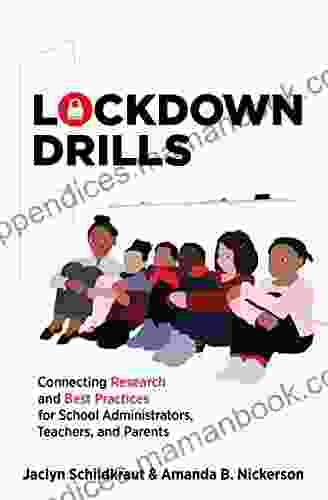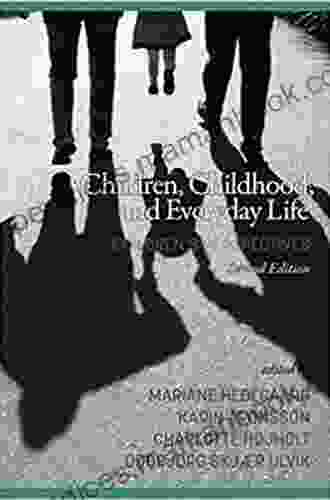New Perspectives on Willingness to Communicate in Second Language Learning: A Comprehensive Analysis

5 out of 5
| Language | : | English |
| File size | : | 6361 KB |
| Text-to-Speech | : | Enabled |
| Screen Reader | : | Supported |
| Enhanced typesetting | : | Enabled |
| Word Wise | : | Enabled |
| Print length | : | 453 pages |
Willingness to communicate (WTC) is a crucial factor in second language (L2) learning, referring to an individual's readiness and enthusiasm to engage in communication in the target language. This construct has been extensively studied in recent years, leading to a deeper understanding of its multifaceted nature, influencing factors, and implications for language education.
This article provides a comprehensive overview of the latest research on WTC in L2 learning, exploring both theoretical and practical aspects. We will examine the different dimensions of WTC, identify the factors that shape it, and discuss effective strategies for enhancing learners' willingness to communicate.
Dimensions of Willingness to Communicate
WTC is not a unitary construct but rather a multidimensional phenomenon that encompasses various aspects of an individual's communicative behavior. Research has identified several key dimensions of WTC:
- Cognitive WTC: Refers to an individual's beliefs, attitudes, and self-efficacy related to communication in the target language. This includes factors such as language anxiety, self-confidence, and perceived competence.
- Affective WTC: Relates to an individual's emotional experiences and feelings associated with communication in the target language. This includes factors such as enjoyment, motivation, and interest.
- Behavioral WTC: Refers to an individual's actual communication behavior in the target language. This includes factors such as frequency of speaking, willingness to participate in conversations, and risk-taking.
Factors Influencing Willingness to Communicate
WTC is influenced by a complex interplay of personal, social, and contextual factors. Some of the key factors that have been found to shape WTC include:
- Learner Motivation: Highly motivated learners tend to have higher levels of WTC. Motivation can be intrinsic (e.g., interest in the language) or extrinsic (e.g., need for the language for career or travel).
- Language Anxiety: Language anxiety, or fear of making mistakes or being judged negatively, can significantly inhibit WTC. Learners with high levels of language anxiety may avoid communication opportunities or participate with less confidence.
- Self-Efficacy: Learners' beliefs in their ability to communicate effectively in the target language play a crucial role in their WTC. Learners with high self-efficacy are more likely to engage in communication and take risks.
- Cultural Factors: Cultural differences can influence WTC. For example, learners from cultures that value collectivism may be less willing to speak up in class, while learners from cultures that value individualism may be more assertive in their communication.
- Sociocultural Context: The social and cultural context in which language learning takes place can also affect WTC. Learners who are surrounded by opportunities to use the target language in real-world situations may have higher levels of WTC.
Implications for Language Education
Understanding WTC and its influencing factors has important implications for language education. Here are some key considerations for educators:
- Create a positive learning environment: Fostering a positive and supportive learning environment can help to reduce language anxiety and enhance learners' WTC. This includes providing opportunities for learners to practice speaking in a non-threatening atmosphere.
- Motivate learners: Engaging learners in activities that are relevant to their interests and goals can help to increase their intrinsic motivation and, consequently, their WTC.
- Develop learners' self-efficacy: Providing learners with opportunities to experience success in communication can help to build their self-efficacy and increase their WTC.
- Address cultural factors: Educators should be aware of cultural differences that may influence WTC and adapt their teaching strategies accordingly.
- Utilize technology: Technology can be leveraged to create authentic communication opportunities that can enhance learners' WTC. For example, online language exchange platforms allow learners to connect with native speakers and practice speaking in a real-world context.
Willingness to communicate is a multifaceted construct that plays a critical role in second language learning. By understanding the different dimensions of WTC, the factors that influence it, and the implications for language education, educators can create more effective learning environments that foster learners' willingness to communicate and ultimately enhance their language proficiency.
Further research is needed to continue exploring the complexities of WTC and to develop innovative strategies for enhancing learners' communicative competence in the target language.
References
- Dörnyei, Z. (2009). The psychology of the language learner: Individual differences in second language acquisition. Lawrence Erlbaum Associates.
- MacIntyre, P. D., Clément, R., Dörnyei, Z., & Noels, K. A. (1998). Conceptualizing willingness to communicate in a L2: A situational model of L2 confidence and L2 anxiety. Language Learning, 48(4),545-582.
- Oxford, R. L. (1999). Anxiety and the teaching of foreign languages. Annual Review of Applied Linguistics, 19, 186-209.
- Skehan, P. (2009). Second language learning: Theories and principles. Routledge.
- Williams, M. (2010). Willingness to communicate in a second language: Theory and research. Multilingual Matters.
5 out of 5
| Language | : | English |
| File size | : | 6361 KB |
| Text-to-Speech | : | Enabled |
| Screen Reader | : | Supported |
| Enhanced typesetting | : | Enabled |
| Word Wise | : | Enabled |
| Print length | : | 453 pages |
Do you want to contribute by writing guest posts on this blog?
Please contact us and send us a resume of previous articles that you have written.
 Top Book
Top Book Novel
Novel Fiction
Fiction Nonfiction
Nonfiction Literature
Literature Paperback
Paperback Hardcover
Hardcover E-book
E-book Audiobook
Audiobook Bestseller
Bestseller Classic
Classic Mystery
Mystery Thriller
Thriller Romance
Romance Fantasy
Fantasy Science Fiction
Science Fiction Biography
Biography Memoir
Memoir Autobiography
Autobiography Poetry
Poetry Drama
Drama Historical Fiction
Historical Fiction Self-help
Self-help Young Adult
Young Adult Childrens Books
Childrens Books Graphic Novel
Graphic Novel Anthology
Anthology Series
Series Encyclopedia
Encyclopedia Reference
Reference Guidebook
Guidebook Textbook
Textbook Workbook
Workbook Journal
Journal Diary
Diary Manuscript
Manuscript Folio
Folio Pulp Fiction
Pulp Fiction Short Stories
Short Stories Fairy Tales
Fairy Tales Fables
Fables Mythology
Mythology Philosophy
Philosophy Religion
Religion Spirituality
Spirituality Essays
Essays Critique
Critique Commentary
Commentary Glossary
Glossary Bibliography
Bibliography Index
Index Table of Contents
Table of Contents Preface
Preface Introduction
Introduction Foreword
Foreword Afterword
Afterword Appendices
Appendices Annotations
Annotations Footnotes
Footnotes Epilogue
Epilogue Prologue
Prologue Maci Bookout
Maci Bookout Kelly Morrison
Kelly Morrison Jeanette Baker
Jeanette Baker Hideyuki Furuhashi
Hideyuki Furuhashi Katia Lief
Katia Lief Samantha Lee
Samantha Lee C D Boswell
C D Boswell Lynn Marie Lusch
Lynn Marie Lusch Christine Kersey
Christine Kersey Marv Aden
Marv Aden Maria Lichty
Maria Lichty Charles Augustus Goodrich
Charles Augustus Goodrich Michael J Sullivan
Michael J Sullivan Kathryn Clay
Kathryn Clay Zondervan
Zondervan Greg Pak
Greg Pak Mark J Musser
Mark J Musser Nelson Demille
Nelson Demille Debbie Lacy
Debbie Lacy Alvin Moscow
Alvin Moscow
Light bulbAdvertise smarter! Our strategic ad space ensures maximum exposure. Reserve your spot today!

 Jonathan HayesGame of Thrones: Song of Ice and Fire - A Captivating Journey into the World...
Jonathan HayesGame of Thrones: Song of Ice and Fire - A Captivating Journey into the World...
 Hank MitchellConnecting Research and Best Practices for School Administrators, Teachers,...
Hank MitchellConnecting Research and Best Practices for School Administrators, Teachers,... Xavier BellFollow ·14k
Xavier BellFollow ·14k Terence NelsonFollow ·9.9k
Terence NelsonFollow ·9.9k Bobby HowardFollow ·15.3k
Bobby HowardFollow ·15.3k Shannon SimmonsFollow ·8.6k
Shannon SimmonsFollow ·8.6k Tom HayesFollow ·13.6k
Tom HayesFollow ·13.6k Elliott CarterFollow ·7.7k
Elliott CarterFollow ·7.7k Max TurnerFollow ·12.1k
Max TurnerFollow ·12.1k Corey HayesFollow ·7k
Corey HayesFollow ·7k

 Jamie Blair
Jamie BlairA Delightful Blend of Love and Laughter: Exploring Short...
In the realm of literature, where imagination...

 Gary Cox
Gary CoxDetective Warren: A Gripping Tale of Suspense and...
Step into the enigmatic world of Detective...

 Junot Díaz
Junot DíazArlinlife Random Encounters: An In-Depth Exploration of...
Arlinlife Random Encounters is a...
5 out of 5
| Language | : | English |
| File size | : | 6361 KB |
| Text-to-Speech | : | Enabled |
| Screen Reader | : | Supported |
| Enhanced typesetting | : | Enabled |
| Word Wise | : | Enabled |
| Print length | : | 453 pages |













